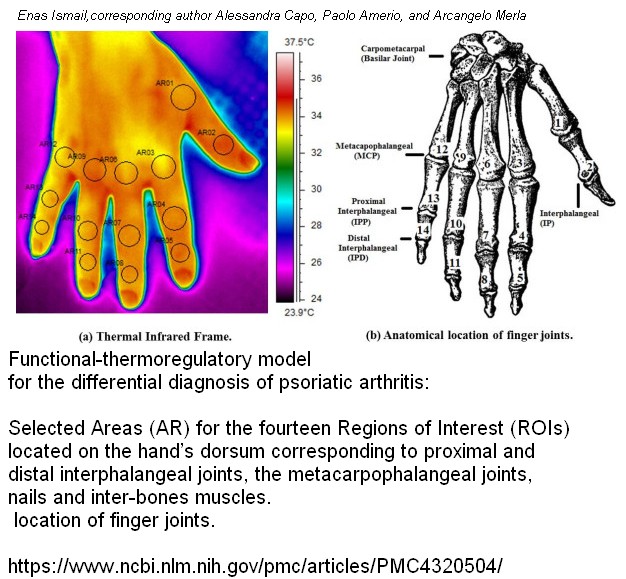Affichages
Arthritis Psoriasis in thermography
Psoriatic arthritis (also arthritis psoriatica, arthropathic psoriasis or psoriatic arthropathy) is a type of inflammatory arthritis that will develop in between 6 and 42% of people who have the chronic skin condition psoriasis. Psoriatic arthritis is classified as a seronegative spondyloarthropathy and therefore occurs more commonly in patients with tissue type HLA-B27.
Psoriasis is a long-lasting autoimmune disease which is characterized by patches of abnormal skin. These skin patches are typically red, itchy, and scaly. They may vary in severity from small and localized to complete body coverage. Injury to the skin can trigger psoriatic skin changes at that spot, which is known as Koebner phenomenon.[1]
From the greek arthron, Άρθρων (joint) and 'ἀρθρῖτις', ψωρίασις, psôríasis, (scabies eruption)
Source: Functional-thermoregulatory model for the differential diagnosis of psoriatic arthritis
Français: Arthrite
Erreur de référence : Des balises <ref> existent, mais aucune balise <references/> n’a été trouvée.
